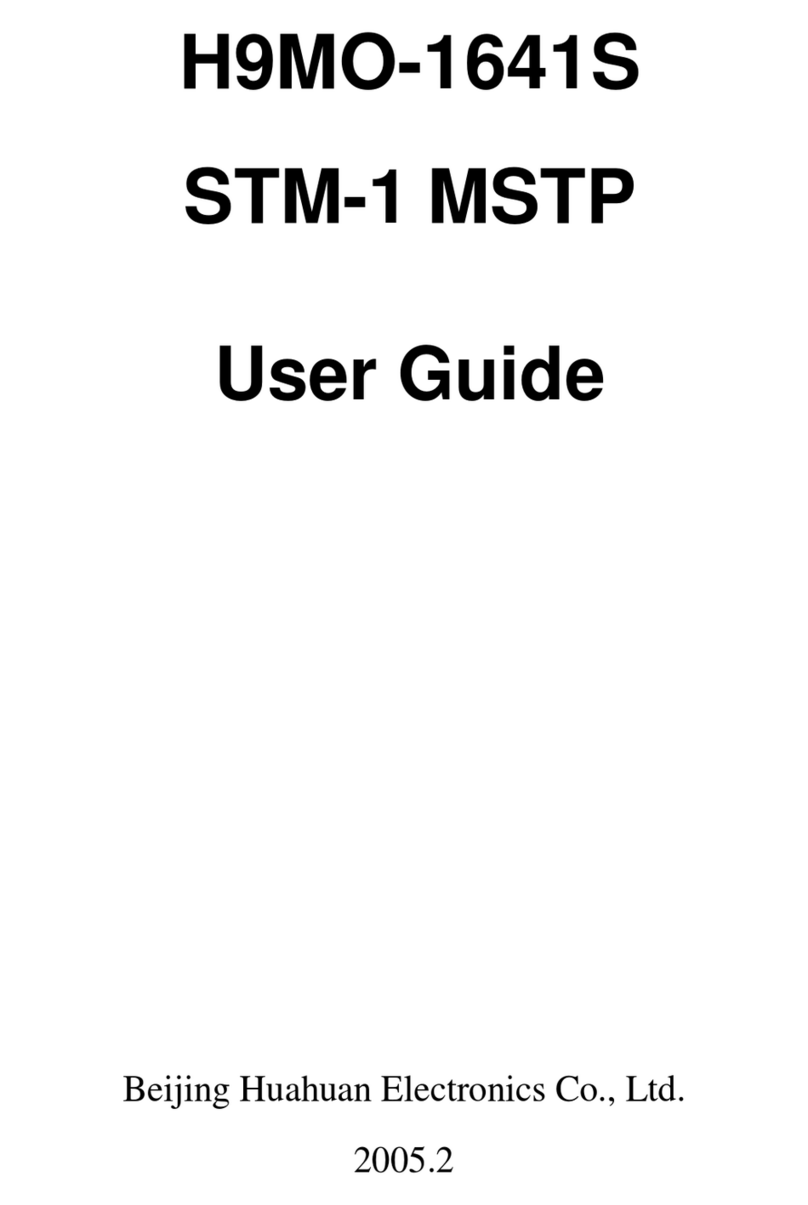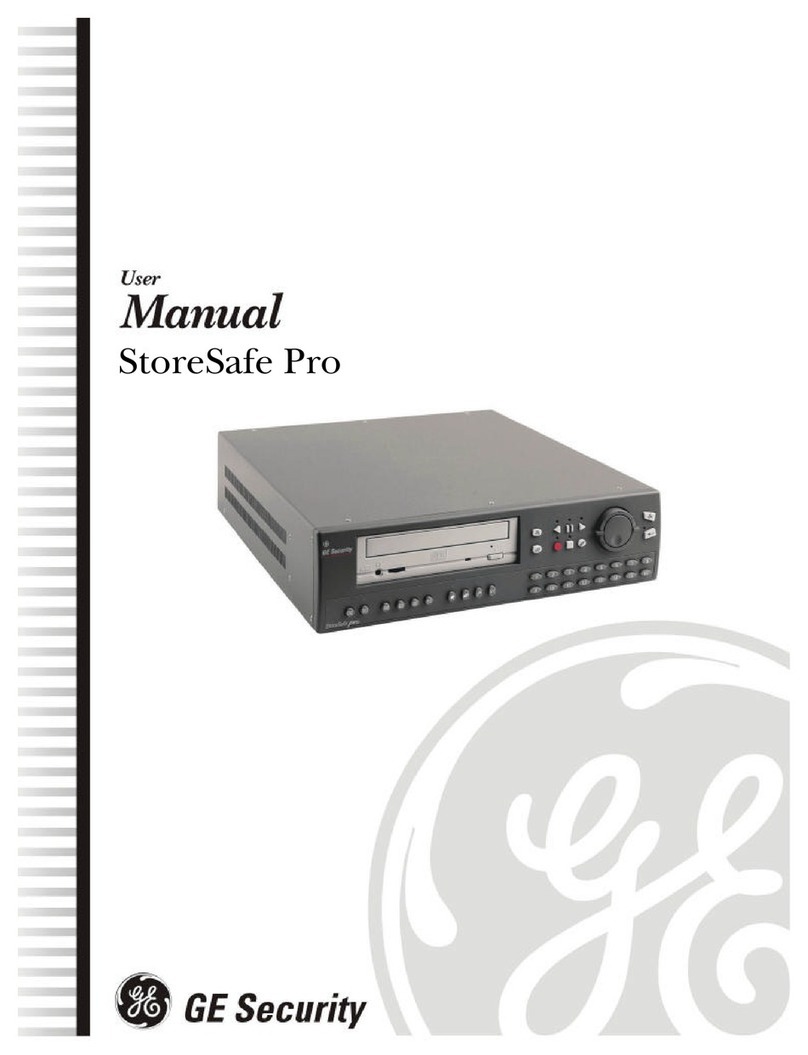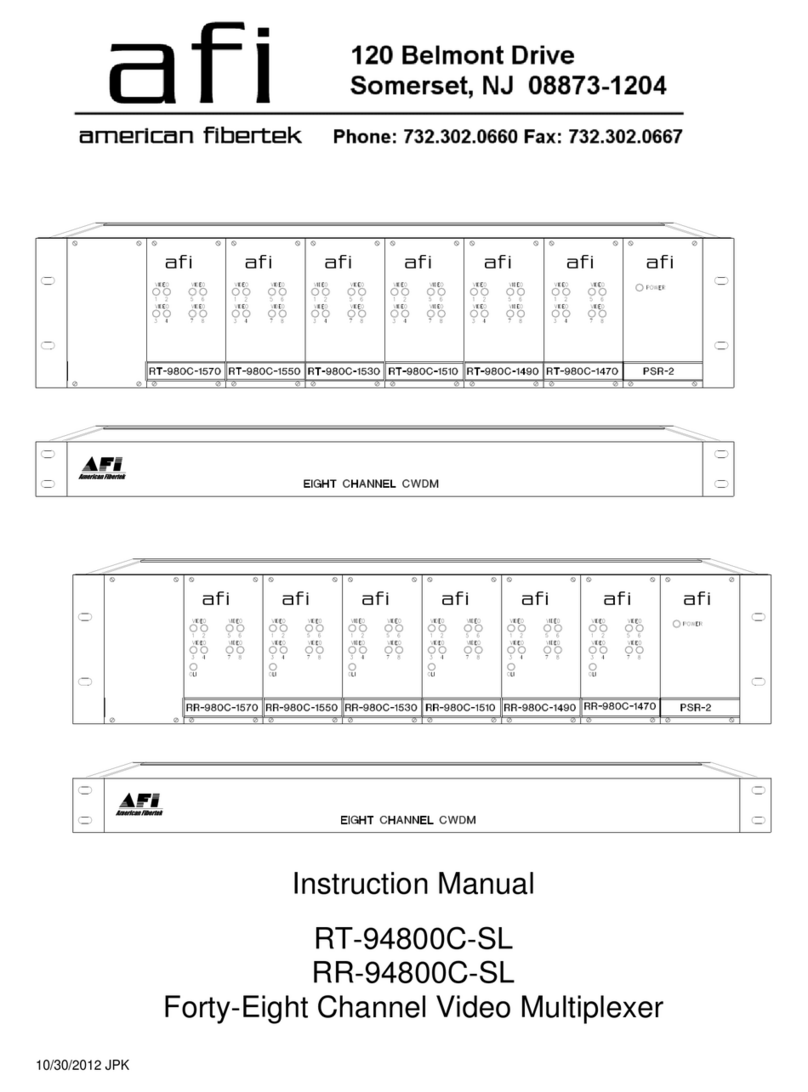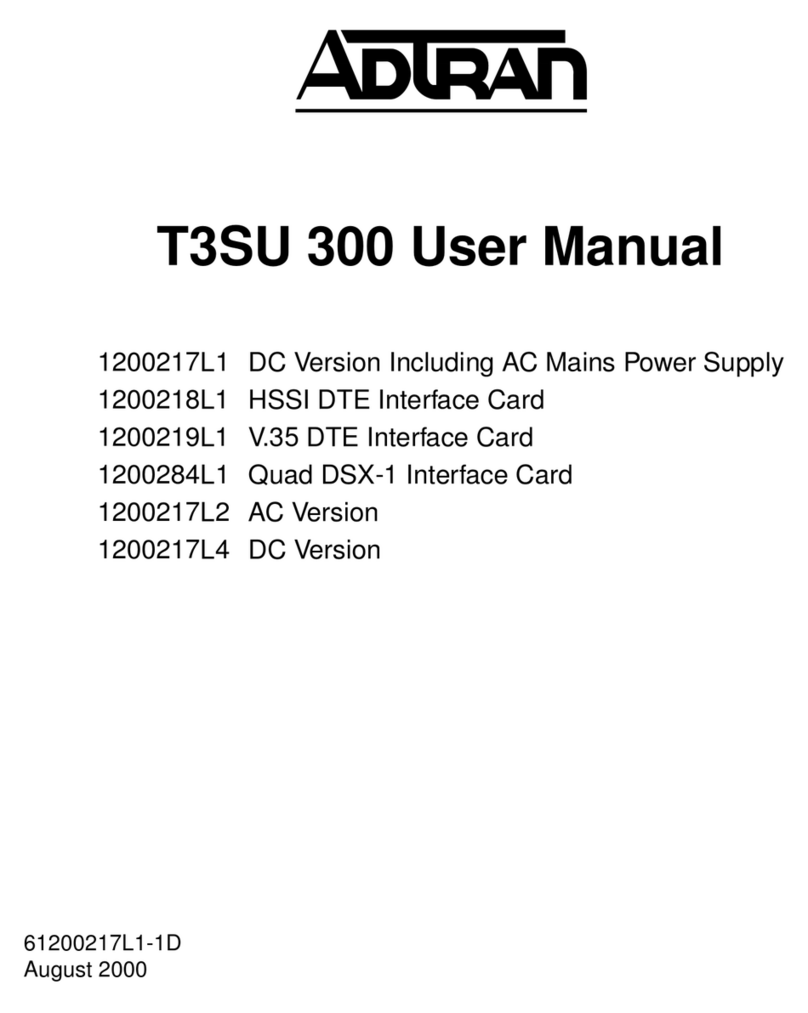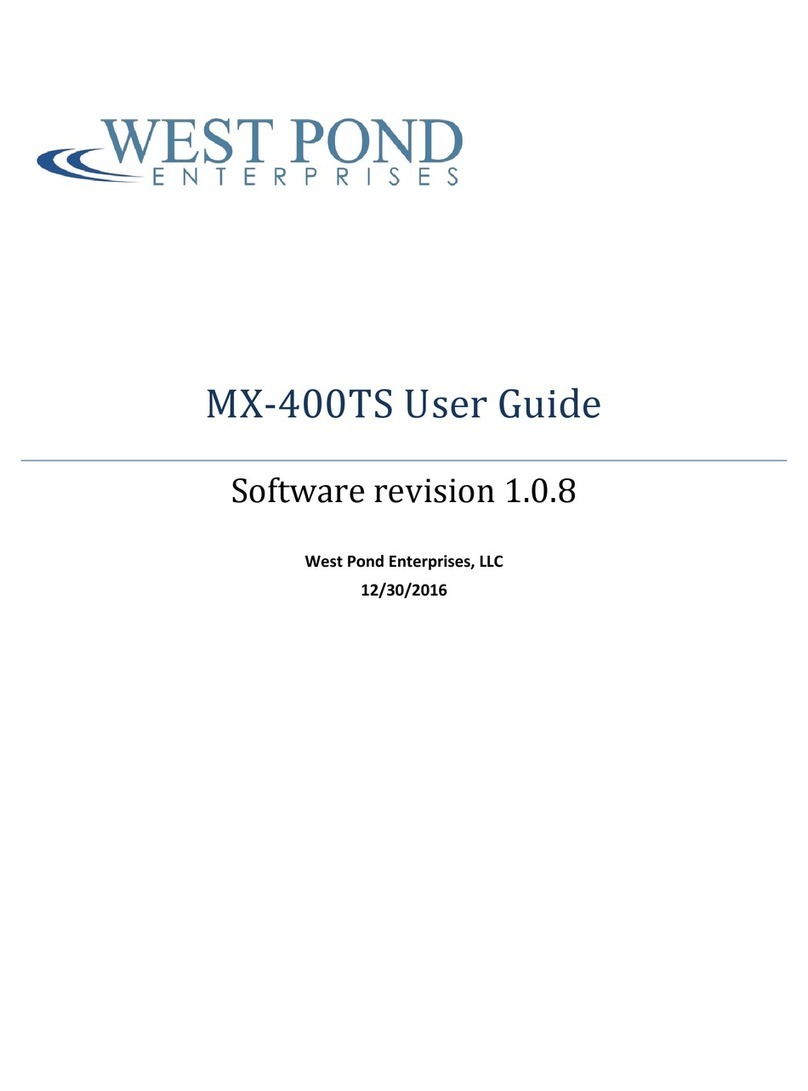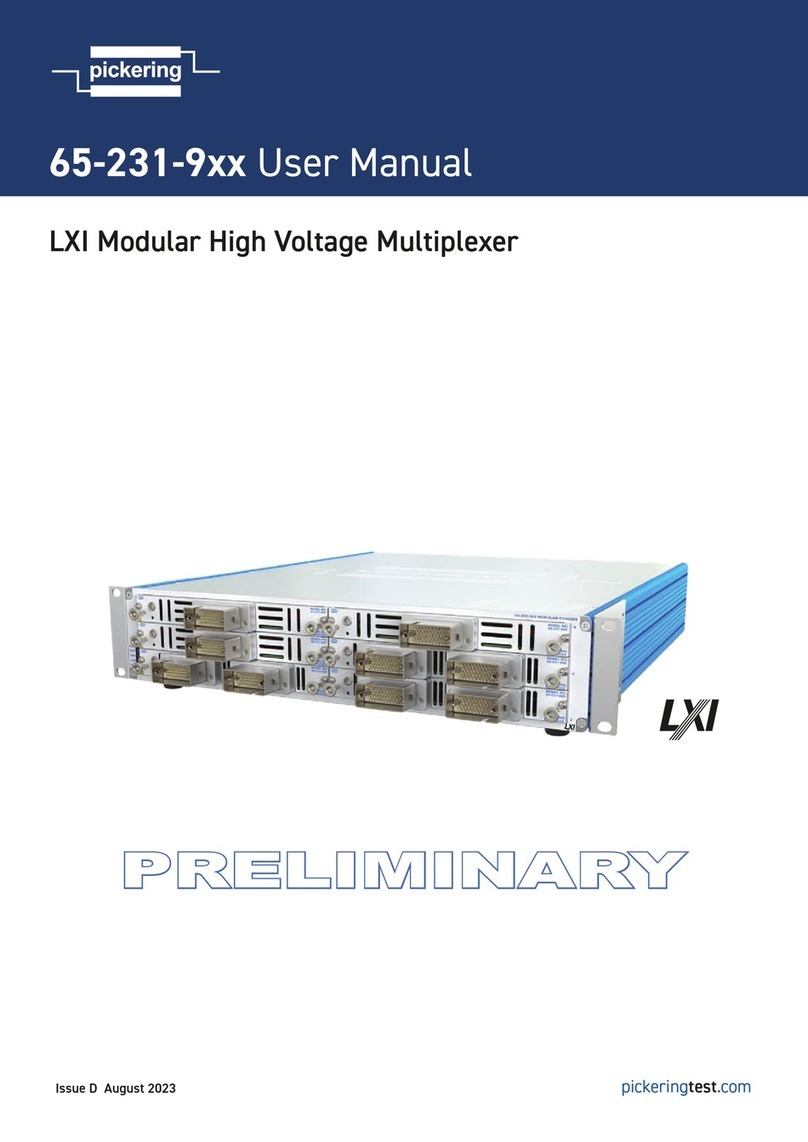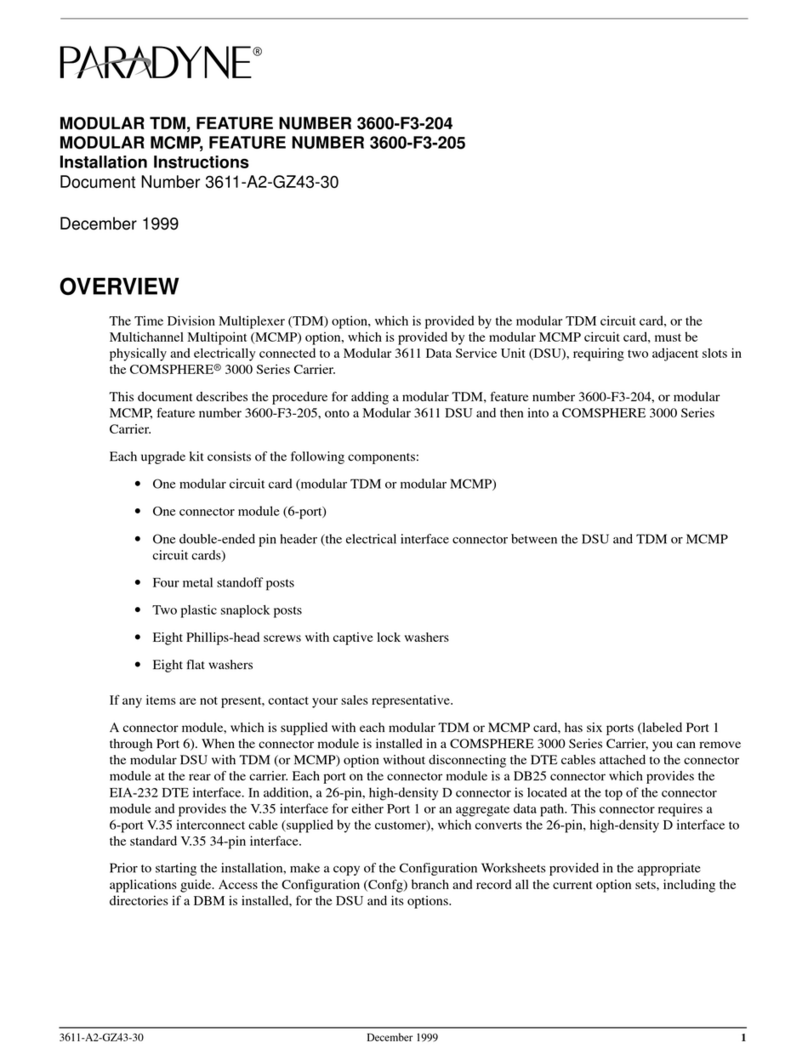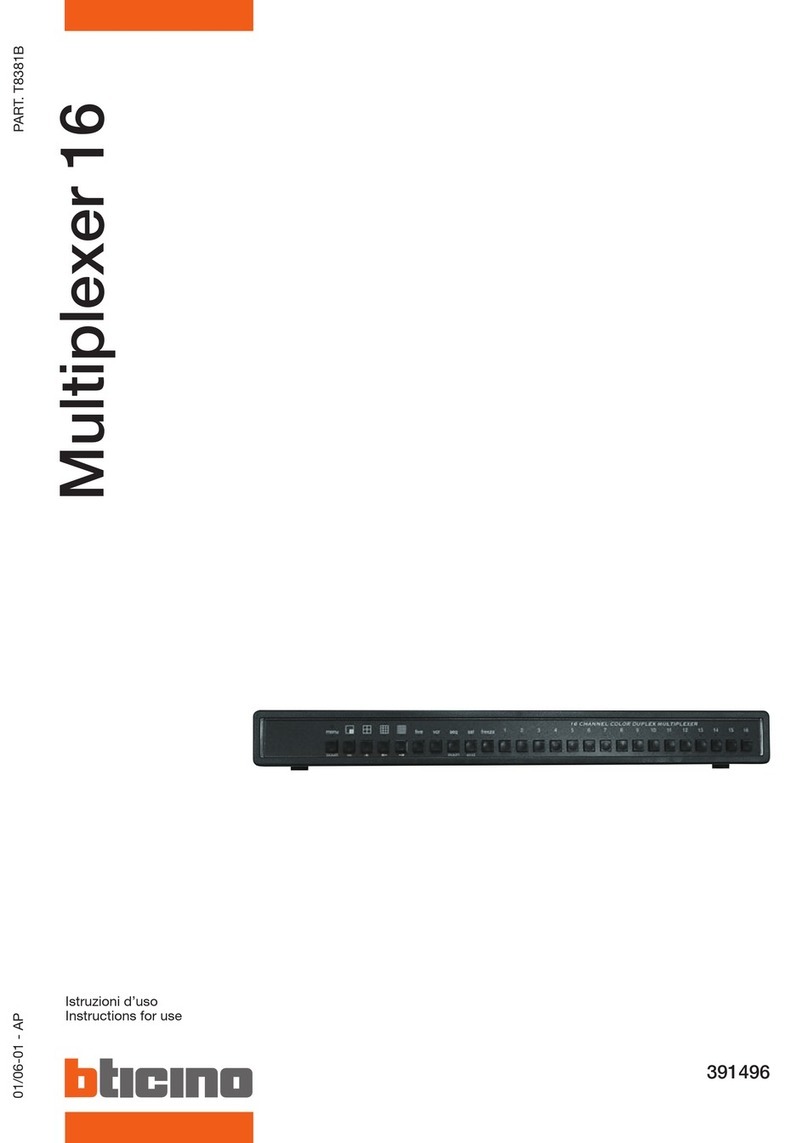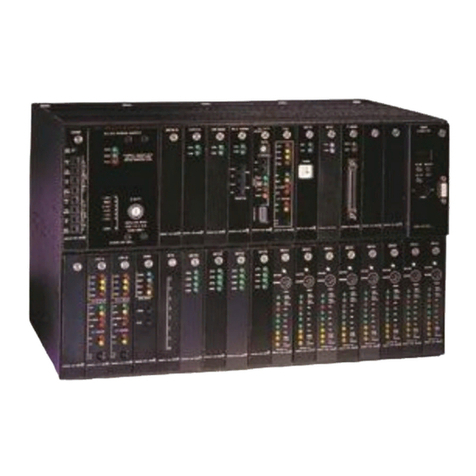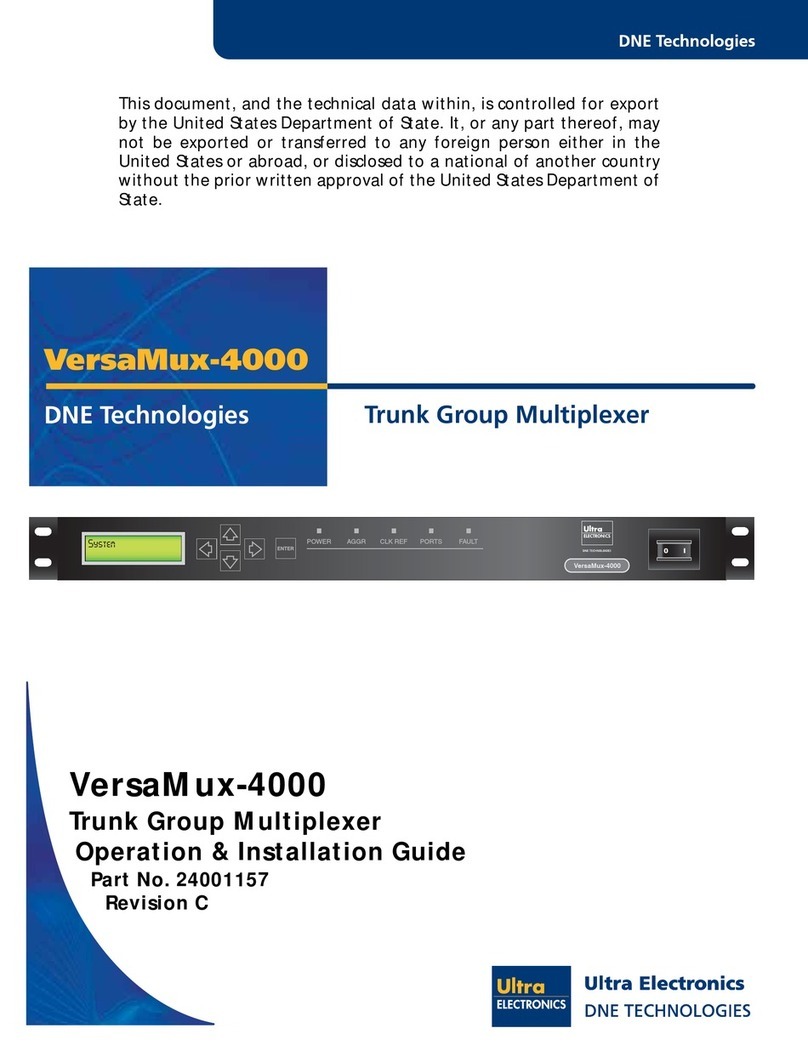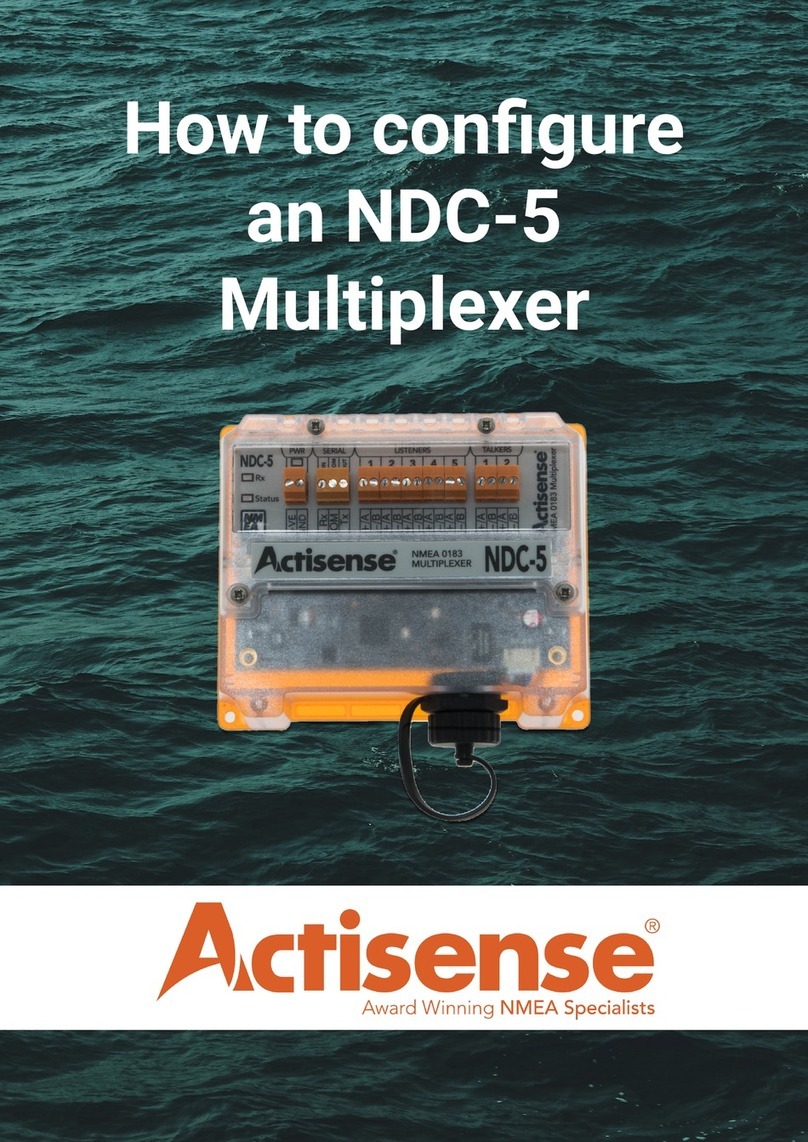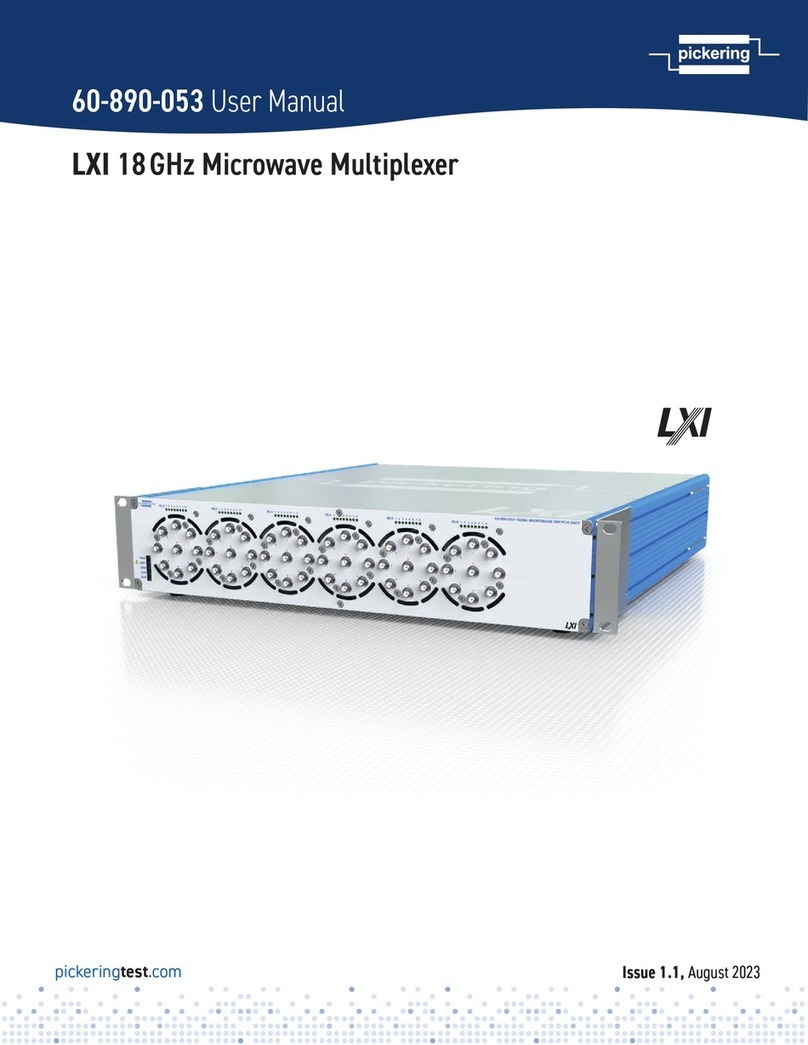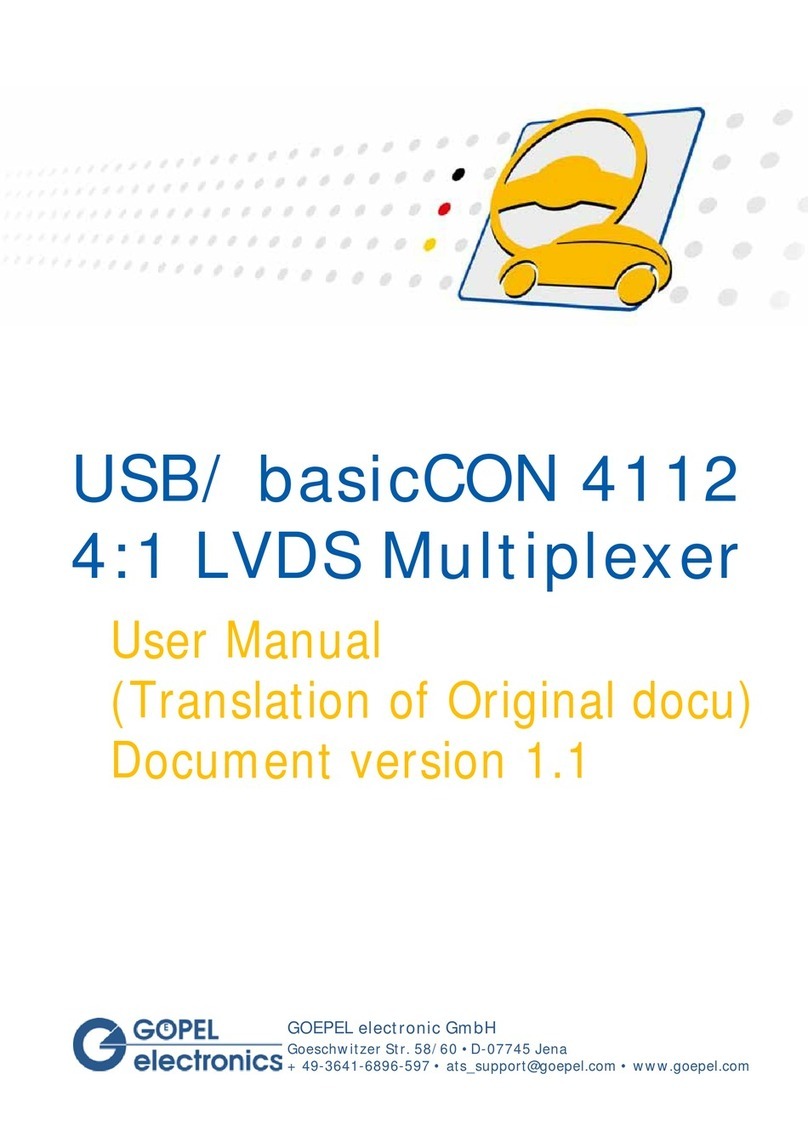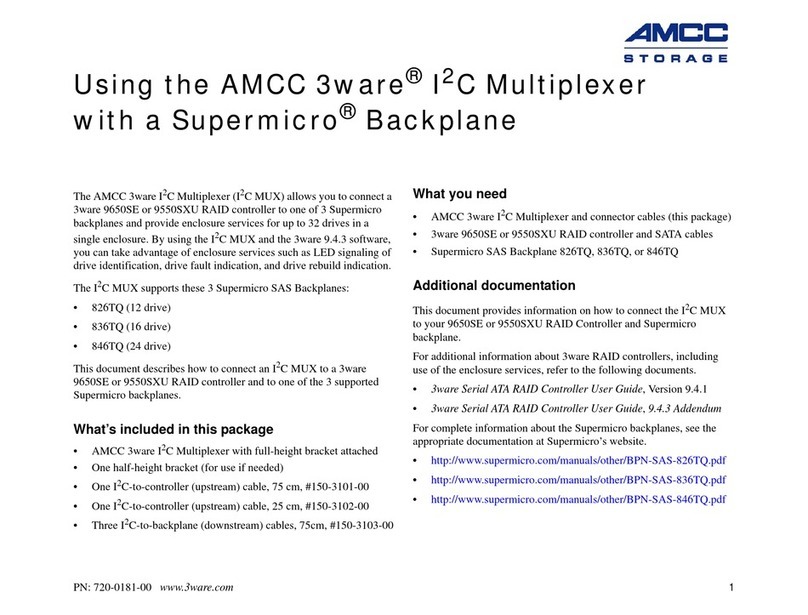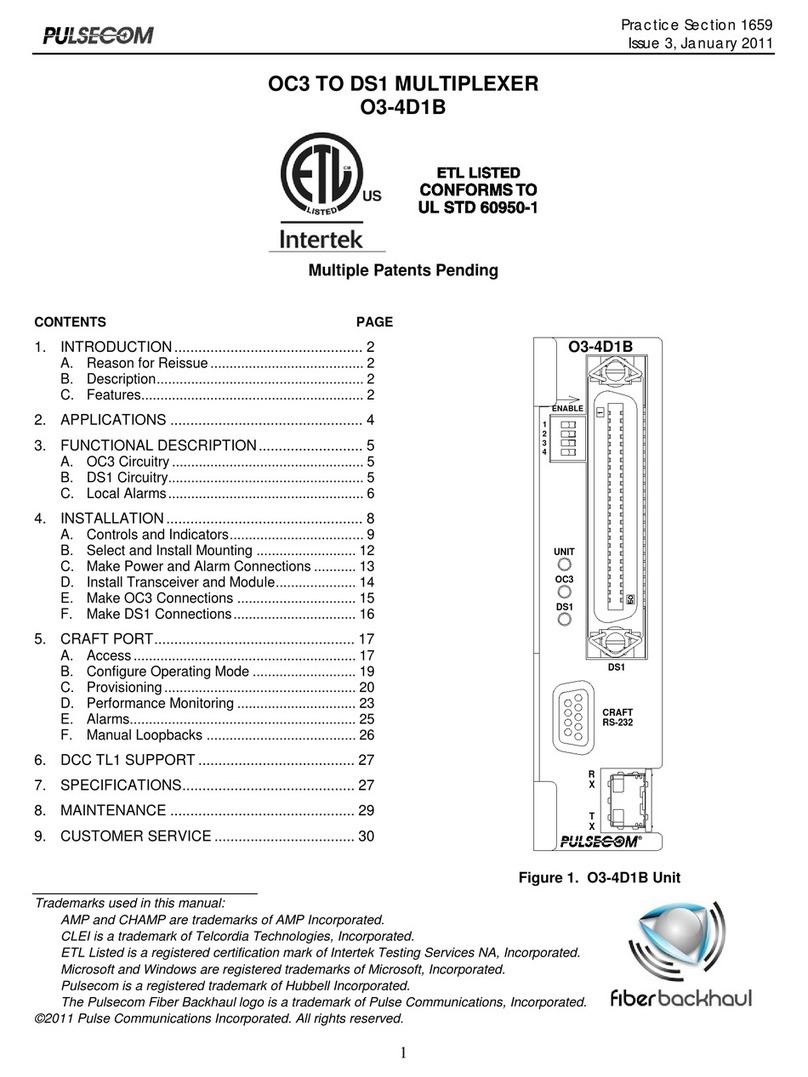Beijing Huahuan Electronics H0EL-EthMux V8 User manual

contents -1-
H0EL-EthMux V8
E1over Ethernet Multiplexer
User’s Manual
Beijing Huahuan Electronics Co., Ltd.

contents -2-
H0EL-EthMux V8
E1 over Ethernet Multiplexer
User’s Manual
Beijing Huahuan Electronics Co., Ltd.
2007.12

contents -3-
Disclaimer
The information contained in this document is subject to change without
notice and does not represent a commitment on the part of Beijing Huahuan
Electronics Co., Ltd. (Huahuan). The information in this document is believed
to be accurate and reliable; however, Huahuan assumes no responsibility or
liability for any errors or inaccuracies that may appear in the document.
Copyright2006 by Beijing Huahuan Electronics Co., Ltd. All rights reserved.
No part of this publication may be reproduced or distributed in any form or by
any means, without prior written permission of Huahuan.
Product Model: H0EL-EthMux V8
Product Name: E1 over Ethernet Multiplexer
Manual Version: 1.1
Last Update: 2007. 12
BEIJING HUAHUAN ELECTRONICS Co.,LTD.
Address: No.26, Shangdi 6th Street,
Haidian District, Beijing, 100085
P.R. China
Tel: (8610)62981998, (8610)62988820, (8610)62960985
Fax: (8610)82899800
Web: http://www.huahuan.com;http://www.huahuan.com.cn
E-mail:support@huahuan.com

contents -4-
TABLE OF CONTENTS
1. GENERAL......................................................................................1
1.1 OVERVIEW ............................................................................................1
1.2 FEATURES .............................................................................................1
1.3 APPLICATIONS.......................................................................................2
1.4 TIMING MODES......................................................................................3
2. SYSTEM ARCHITECTURE.........................................................5
2.1 BLOCK DIAGRAM...................................................................................5
2.2 DESCRIPTION.........................................................................................5
2.3 FRONT PANEL ........................................................................................6
2.3.1 Diagram........................................................................................6
2.3.2 LED’s ...........................................................................................6
2.3.1 Dip Switches Definition.................................................................7
2.4 REAR PANEL..........................................................................................8
2.4.1 Grounding screw...........................................................................8
2.4.2 System alarm.................................................................................8
2.4.3 E1 Port .........................................................................................8
2.4.4 Ethernet ports ...............................................................................9
2.4.5 Power............................................................................................9
3. INSTALLATION............................................................................9
3.1 MECHANICAL........................................................................................9
3.2 ELECTRICAL........................................................................................10
3.2.1 Power connection........................................................................10
3.2.2 E1 connections............................................................................10
3.2.3 Ethernet connection ....................................................................12
4. COMMON FAULTS....................................................................13
4.1 E1 ALARMS.........................................................................................13
4.2 LNK/ACT LED OFF ..............................................................................13
4.3 READY LED DOES NOT BLINK..............................................................13
4.4 CANNOT SET UP E1CHANNEL................................................................13
4.4.1 Same LAN domain.......................................................................13
4.4.2 Different LAN domain.................................................................14
4.5 DOWNSTREAM REPORTING SLIPS ..........................................................14
5. WEB MANAGER.........................................................................14
5.1 SHOW CURRENT STATUS MENU.............................................................14
5.2 LINE TEST ...........................................................................................15
5.3 CONFIGURATION..................................................................................16

contents -5-
5.4 NETWORK CONFIGURATION .................................................................21
6. SPECIFICATION.........................................................................24
6.1 CAPACITY ...........................................................................................24
6.2 E1 INTERFACE .....................................................................................24
6.3 10/100BASE-TX PORT..........................................................................24
6.4 POWER................................................................................................24
6.5 OPERATING CONDITION........................................................................24
6.6 DIMENSIONS........................................................................................25
6.7 WEIGHT...............................................................................................25


Huahuan
Beijing Huahuan Electronics Co., Ltd.
H0EL-EthMux V8 User Manual V1.1 -1-
1.
General
1.1 Overview
Thank you for selecting the H0EL-EthMux V8 product designed and made by
Beijing Huahuan Electronics Co., Ltd. The product can be used to provide E1
communication channels over Ethernet or IP networks.
The H0EL-EthMux V8 has many optional parameters, which can be modified
by the user to suite different application requirements. Please read this manual
carefully before installing the product.
It is well known that the E1 signal comes from PCM technology which is TDM
in nature. It transmits information in a constant bit rate of E1_2048kbit/s, TDM
technology occupies fixed transmission bandwidth, with QoS features suitable for
real-time applications such as voice and video. The QoS features include short and
stable transmission delay, low jitter and wander, etc.
On the other hand, Ethernet is based on statistical multiplexing, transmitting
and exchanging information in packets. It does not take up a fixed transmission
bandwidth, which is good for achieving higher bandwidth utilization. But Ethernet
technology does not provide adequate QoS for real time applications.
Until recently, voice and data were, and still are to a large extent, transported
over two separate networks. But the requirement for both types of information to be
carried over a unified network is growing rapid. Packets over SONET/SDH
techniques to integrate date into the TDM network have been around for many
years. But for voice over packet based data networks, most of the efforts are spent
on creating special equipment that packets voice or video signals, such as VoIP
techniques.
However, to take advantage of the data network, it is neither cost effective,
nor necessary to hastily replace all the TDM based equipment with new packet
based equipment. The H0EL-EthMux V8 can be used to emulate transparent E1
channels over an Ethernet with adequate QoS, so that most of the existing E1based
applications can be readily setup over Ethernet LANs and WANs. One particular
suited application is to build E1 links with low cost wireless LAN bridges, replacing
much more costly microwave radios.
1.2 Features
User-friendly Web server supported for easy setup and maintenance
Support SNMP V1 and V2 network management
Point to point and point to multipoint supported
Uplink ports 1+1 backup supported

Beijing Huahuan Electronics Co., Ltd Huahuan
- 2 - H0EL-EthMux V8 User Manual V1.1
Eight E1 Ports supported
Stable E1 clock recovery, low jitter and wander
Low processing delay for E1 channels, high bandwidth usage efficiency
Resist to packet loss, with PCM frame synchronization protection
User definable encapsulation packet size for different application
Support Ethernet encapsulation and UDP/IP protocol encapsulation
Support VLAN settings for E1 service and in band VLAN management.
Enough jitter buffer to resist packet delay variation (PDV)
Local Ethernet port throughput limiting, assuring E1 QoS
Local and remote E1 LOS and AIS and packet loss indication for
trouble-shooting and maintenance
Support cascade concatenate for more than 8 E1 ports
1.3 Applications
H0EL-EthMux V8 is used to setup 1~8 transparent E1 channels over LAN or
IP networks, as depicted in Fig. 1.3-1.
(a) Point to Point Application
(b) Point to Multipoint Application
Fig. 1.3-1 H0EL-EthMux V8 application paradigm

Huahuan
Beijing Huahuan Electronics Co., Ltd.
H0EL-EthMux V8 User Manual V1.1 -3-
In the figure, a pair of H0EL-EthMux V8s create transparent E1 channels over
the packet network, providing connections between the PBX and telephone exchange,
or other terminal devices. At the same time, computers talk to each other through the
local Ethernet ports on the H0EL-EthMux V8’s. This configuration guarantees that
the E1 channels get higher priority over computer data for maximum QoS.
The most widely used application of H0EL-EthMux V8 is to set up point to
point wireless E1 links using low cost wireless LAN bridges. H0EL-EthMux V8 can
work with most LAN bridges on the market. It may be necessary to adjust different
parameters such as packet size and packet jitter absorption buffer size for best
operation for different LAN bridges.
Be aware that wireless LAN bridges have a very limited bandwidth. If Ethernet
data is to be transferred at the same time, its traffic must be restricted. Otherwise it
will affect the E1 packets. Since the LAN bridges usually don’t have adequate QoS
mechanism to guarantee the E1 priority, it is strongly recommended that the data
traffic be routed through the H0EL-EthMux V8 local data port, as depicted in Fig.
1.3-2.
Fig. 1.3-2 preferred connections for LAN traffic
WARNING: When connecting to a wireless LAN bridge, the uplink
Ethernet cable often connects to the outdoor unit, posing danger to lightning
strikes that can seriously damage the equipment. To protect the equipment as
well as people, surge protection devices with good earth connection is strongly
recommended. Poor earth connection may also hinder the operation of the
Ethernet port, causing severe packet losses.
1.4 Timing modes
To emulate a clear E1 channel over a packet network, the H0EL-EthMux V8 not
only conveys data stream content correctly from the source to the destination, but
also passes timing. Packet networks do not provide such built-in timing transparency
mechanism as TDM networks do. H0EL-EthMux V8 uses its proprietary algorithm
to reconstruct the E1 clock at the destination. The recovered clock is of very high
quality, with low jitter and wander. Typical frequency offset is within 5ppm, and
jitter is below 0.1UI. It can be adopted in most applications. This timing mode of

Beijing Huahuan Electronics Co., Ltd Huahuan
- 4 - H0EL-EthMux V8 User Manual V1.1
rebuilding the E1 clock at the destination is called Adaptive Timing.
For applications where separate clock distribution network exists, another timing
mode, Loop back Timing, may be used for maximum clock quality.
The two timing modes of H0EL-EthMux V8 are depicted in Fig.1.4-1.
Fig.1.4-1 E1Timing modes
Correct timing mode setting is important for smooth operations. In most cases,
setting both units to adaptive timing mode is sufficient. But sometimes, setting one
unit to loop timing mode may work better. For example, setting the H0EL-EthMux
V8 unit connected with the clock master (such as local exchange) to loop back mode,
and the other unit connected with the clock slave (such as PBX or remote module) to
adaptive mode, is probably better than setting both to adaptive modes.
One typical error in telecom applications is to connect two communication
devices that are both clock slaves. Neither will H0EL-EthMux V8 support such
operation no mater how the timing modes are set.
Note: that the E1channel emulation takes several minutes to stabilize.
During that period, clock drift may exceed the limit, errors and slips may occur.
Various timing schemes are enlisted in Table 1.4-1, for applications depicted in
Fig.1.4-2.
Fig.1.4-2 Timing mode scheme reference diagram
Table 1.4-1 Timing mode schemes
Equipment A
clock mode Equipment B
clock mode
A side
EthMux V8
Timing mode
B side
EthMux V8
Timing mode
Note
master master loop back loop back Equipment A & B
clocks synchronous
adaptive adaptive
master master adaptive adaptive Equipment A & B
clocks plesiochronous

Huahuan
Beijing Huahuan Electronics Co., Ltd.
H0EL-EthMux V8 User Manual V1.1 -5-
master slave loop back adaptive
adaptive adaptive
slave master adaptive loop back
adaptive adaptive
slave slave Not allowed
Note that setting both units to adaptive timing mode works well for all the conditions,
although the other option may work better.
2.
System architecture
2.1 Block diagram
The internal functional structure of H0EL-EthMux V8 is depicted below:
Fig. 2.1-1 Functional diagram
2.2 Description
The heart of H0EL-EthMux V8 is the TDM/Packet processing unit. It
truncates E1 data stream, putting the data into Ethernet packet with or without IP
headers. The packets are passed to the Ethernet switch unit via MII interface, and
are sent out adaptive the uplink ports. Ethernet data from two local data port are
also sent out through the uplink ports, but with lower priority than those packets
containing E1 data.
In the reverse direction, packets from the uplink ports are sorted at the switch
unit. All but E1 packets are passed to the local data ports. The packets containing
E1 data are sent to the TDM/Packet processing unit for reassembling the original
data stream, and recovering the E1 clock which is the key element of the device.
Very sophisticated algorithm is used to ensure that the reconstructed clock will meet
the stringent requirement of TDM applications. The most important parameters are
jitter, wander, and signal delay.
The control unit interfaces with the user through console port so that various
operational parameters can be modified.

Beijing Huahuan Electronics Co., Ltd Huahuan
- 6 - H0EL-EthMux V8 User Manual V1.1
2.3 Front panel
2.3.1 Diagram
H0EL-EthMux V8 is shown in Fig. 2.3.1-1.
Fig. 2.3.1-1 Front panel of H0EL-EthMux V8
2.3.2 LED’s
There are 38 LED’s on the front panel, divided into 4 groups.
First group: PWR and Ready indicators.
The definition is as below table:
Table 2.3.2-1 PWR and Ready indicators
LED Color Definition Explanation
PWR G power indicator On: Normal
Off: Power Off / Failure
Ready G operation status On or off: System abnormal or
system initialization.
Blink: Normal operation
When power the device on, PWR indicator will be lit, indicator Ready will be on
temporarily, the other lights will blink alternately, which indicate the system is
starting now.
After a short time( about 60 seconds), light Ready begin to blink, the other light
will indicate the state of each ports respectively, which indicate system is working
well now.
If the Ready light doesn’t blink as above, which indicate the process runs
abnormally, please restart the system again.
Second group: Ethernet ports status indicator.
There are 4 RJ45 Ethernet ports in H0EL-EthMux V8, two uplink Ethernet
ports (UPLINK1 and UPLINK2) and two local Ethernet ports (DATA1 and
DATA2). Each port has 3 status indicators, from top to bottom, they are speed
indication, full/half duplex and link status indication, detailed explanation is as below
table:
Table 2.3.2-2 Ethernet indicator

Huahuan
Beijing Huahuan Electronics Co., Ltd.
H0EL-EthMux V8 User Manual V1.1 -7-
LED Color Definition Explanation
SPD G speed indicator On: 100M
Off: 10M
FDX G duplex indicator On: Full duplex
Off: Half duplex
Link/Act G link activity indicator On: Link
Blink: Data
Off: Inactive
Third group: E1 alarm indicators
This group lights indicate the 8 channels of E1 alarm status and Ethernet
transmission quality, definition as Table 2.3.2-3:
Table 2.3.2-3 E1 alarm indicator
LED Color Definition Explanation
LOS
1~8 R LOS indicator for 8 E1 ports
respectively (Local: RA is off.
Remote: RA is on.)
On: LOS
Off: Normal or disable
Blink: AIS
PKTLOS
1~8 R packet loss indicator On: Ethernet packet loss
Off: Normal
Blink: E1 Packet Loss
Forth group: Far-end equipment link state indicator
FAR-END UP 1~8 are the UP/DOWN status indicators of 1~8 different destination IP addresses.
Table 2.3.2-4 Far-end equipment link state indicator
LED Color Definition Explanation
Far-end UP
n=1~4 G
packet communication status
(Number of remote different
MACs connected with local.
Slave mode n=1, master mode
n=2~4, at local end)
On: Normal, Remote MAC
attained
Off: Remote MAC unattained
while ARP is activated or disable
2.3.1 Dip Switches Definition
There are four Dip Switches on the front panel, the definition show as Table
2.3.1-1.
Table 2.3.1-1 Dip Switches Definition

Beijing Huahuan Electronics Co., Ltd Huahuan
- 8 - H0EL-EthMux V8 User Manual V1.1
Dip label Definition
DIP-1 RA ON: 8 red LEDs indicate remote E1 alarm state
OFF: 8 red LEDs indicate local E1 alarm state
DIP-2 Reserved Reserved
DIP-3 Reserved Reserved
DIP-4 MATN ON: Default IP address 192.192.192.192
OFF: User set IP address
2.4 Rear panel
The rear panel of H0EL-EthMux V8 is depicted in Fig. 2.4-1.
(b)
Fig. 2.4-1 Rear panel
2.4.1 Grounding screw
This is used to connect the chassis to the protective ground.
2.4.2 System alarm
The H0EL-EthMux V8 can output system alarms for maintenance purposes.
There are 2 alarm output pins, the Prompt Alarm and the Deferred Alarm, as shown
in Fig. 2.4.2-1.
D P
SYS ALARM
Prompt AlarmDeferred Alarm
Fig. 2.4.2-1 System alarm port
The alarm conditions for each alarm output are set by the user. The output ports
float when no alarm is present, and connect to ground when alarm activates.
2.4.3 E1 Port
There are 8 E1 ports on the rear panel. The E1 ports impendence are E1-120Ω
for twisted pair cables or 75Ω for coax. The E1-120Ω RJ45 sockets are default for
ports.

Huahuan
Beijing Huahuan Electronics Co., Ltd.
H0EL-EthMux V8 User Manual V1.1 -9-
8
1
Fig 2.4.3-1 RJ45 connector pin sequence
Table 2.4.3-1 RJ45 120Ω-E1signal definition
Pin 1 2 3 4 5 6 7 8
Signal
-+ GND + -GND
E1-IN E1-OUT
2.4.4 Ethernet ports
There are four RJ45 Ethernet ports on the rear panel, 2 for uplink connection to
the transmission packet network, 2 local data ports for local computers to access the
uplink network.
Table 2.4.4-1 RJ45 socket definition
Pin 1 2 3 4 5 6 7 8
Definition TxD+ TxD- RxD+ RxD-
Note: 10/100Base-Tx interface has HP auto-MDIX function and it can
check the transmission and receiving sequence and make
configuration. So both MDI and MDI-X interfaces are supported
and both cross line and direct line can be selected.
2.4.5 Power
Three power options are available, ~220V AC, -48V DC or dual power supply.
It should be specified at the time of purchase.
3.
Installation
3.1 Mechanical
H0EL-EthMux V8 can be placed at the table top or mounted on a 19” rack. If
it is to be mounted on the rack, the four (4) 10mm-high stands should be removed
with a screw driver.
The mechanical dimensions of H0EL-EthMux V8 are given in Fig.3.1-1.

Beijing Huahuan Electronics Co., Ltd Huahuan
- 10 - H0EL-EthMux V8 User Manual V1.1
EthMux V8
Fig.3.1-1 Mechanical dimensions
3.2 Electrical
3.2.1 Power connection
The H0EL-EthMux V8 consumes less than 10W of power.
According to power option, -48V DC or 220V (110V) AC or dual power supply, select the
right power supply for the equipment. For the -48V type, connect -48 supply to the
power connector -48V port, and ground to the other port. The screws on the power
connector must be tightly fastened. For ~220V equipment, connect the device to the
~220V outlet with standard power cord supplied with the equipment. Note that
there is a 1A fuse in the ~220V socket which may be replaced when burned. The
-48V equipment uses PPTC resettable fuse, no customer replacement is required.
It is recommended to turn off the power switch before connecting or
disconnecting the power.
On the left corner of rear panel, a screw is used for connecting the chassis to the
protective ground. Be sure to make this connection using a thick wire.
WARNING: The system must be securely connected to a good protective
ground for safety. All interconnected equipment must be grounded for
maintaining signal integrity as well. Ground potential may also damage the
interface ports.
WARNING:To avoid electric shock, the ~220V outlet must have good
ground.
3.2.2 E1 connections
The E1 ports on H0EL-EthMux V8 are used for connecting to E1 equipment
such as the telephone exchange or PCM terminals.
Eight E1 Ports Supported. E1 ports impendence are E1-120Ω for twisted
pair cables or 75Ω for coax. The E1-120Ω RJ45 sockets are default for ports.
The E1-120Ω connection cable is made with RJ45 connectors and a length of

Huahuan
Beijing Huahuan Electronics Co., Ltd.
H0EL-EthMux V8 User Manual V1.1 -11-
4-pair twisted cable. The cable is not provided with the equipment, and the user is
responsible for making such cables in the field with length suitable for a particular
installation. The signal definition is given in Table 3.2.2-1, and pin order is depicted
in Fig. 3.2.2-1. Note that pin-1 and pin-2 should use the same twisted pair, so should
pin-4 and pin-5.
8
1
Fig. 3.2.2-1 RJ45 pin order
Table 3.2.2-1 120-E1 signal definition
Pin 1 2 3 4 5 6 7 8
Signal - + + -
E1-IN GND E1-OUT GND
The RJ45 sockets are default for E1-120Ω, the 4-jumpers of CNM26, CNM25,
CNM24, CNM20 in EthMux V8 board are jumped 1-2.
Fig. 3.2.2-2 75Ω converting cable
The cable No. BH4.851.122 is for one RJ45 connecter to two BNC (F) sockets
conversion cable, the 4-jumpers of CNM26, CNM25, CNM24, and CNM20 in
EthMux V8 board are jumped 2-3. It is optional for customs.
E1 service can set the actual service quantity by NMS, set the exact E1 channels
received by local equipment from remote equipment, realizing E1 service one point to
multi-point unidirectional transmission function.
By NMS, E1ports provide local loop back and remote loop back, 8 E1 ports loop
back can be set independently, and by the dip RA on front panel E1 indicators can be

Beijing Huahuan Electronics Co., Ltd Huahuan
- 12 - H0EL-EthMux V8 User Manual V1.1
controlled to indicate local or remote ports LOS and AIS status. The local and
remote loop back definition is shown as Fig 3.2.2-3:
Fig 3.2.2-3 E1 loop back
RxTx can test E1 connection cable, and TxRx is used to test the whole
circuit including H0EL-EthMux V8 in the two ends and the link between them.
3.2.3 Ethernet connection
Connect the uplink Ethernet port to the Ethernet transport network, such as the
wireless LAN bridge, and connect the local data port to computers or an Ethernet
switch for local data applications.
The signal definition of the two local Ethernet ports is given in Table 3.2.3-1.
Table 3.2.3-1 Ethernet signal definition
Pin 1 2 3 4 5 6 7 8
Signal
RxD+ RxD- TxD+ TxD-
Note: The ports confirm to HP auto-MDIX spec. It will automatically
adapt to parallel or crossed cables.
The signal definition of the uplink Ethernet ports is given in Table 3.2.3-2.
Table 3.2.3-2 Ethernet signal definition
Pin 1 2 3 4 5 6 7 8
Signal
RxD+ RxD- TxD+ GND GND TxD- GND
GND
Note: The uplink port link parallel cable to LAN bridge.
WARNING: When connecting to a wireless LAN bridge, the uplink
Ethernet cable often connects to the outdoor unit, posing danger to lightning
strikes that can seriously damage the equipment. To protect the equipment as
well as people, surge protection devices with good earth connection is strongly
recommended. Poor earth connection may also hinder the operation of the
Ethernet port, causing severe packet losses.

Huahuan
Beijing Huahuan Electronics Co., Ltd.
H0EL-EthMux V8 User Manual V1.1 -13-
4.
Common faults
This paragraph describes common mistakes and faults that may occur during
installation and maintenance. Please seek support from Beijing Huahuan Electronics
Co., Ltd for other problems.
4.1 E1 Alarms
There are two groups of LEDs, PKT LOS and LOS for E1 alarms LEDs.
When E1 LOS LED is on, loss of E1 signal fault is detected by EthMux.
Possible causes include:
The downstream equipment such as telephone exchange or PCM terminal
is powered off.
The E1 cable connection looses or broken.
E1 LOS LED blinks when respective input E1 signal is AIS, i.e. the content of
E1 data is all 1’s. Such alarm indicates fault conditions on the part of the downstream
equipment.
E1 LOS site is controlled by Dip Switch RA state. When RA Dip Switch ON, the
red LEDs indicate remote E1 LOS state. When RA Dip Switch OFF, the red LEDs
indicate local E1 LOS state.
The E1 PKT LOS lights are packet loss indicator, On for Ethernet packet loss, Blink
for E1 Packet Loss, Off for Normal.
4.2 Lnk/Act LED off
Lnk/Act LED off means the corresponding Ethernet link is not working. Check
the Ethernet cable connection, and the status of the device on the other end of the
cable.
4.3 Ready LED does not blink
After power on, the Ready LED should start to blink. If not, try switch power
off and on again. If this error persists, call for support.
4.4 Cannot set up E1channel
4.4.1 Same LAN domain
When two H0EL-EthMux V8’s are within the same Ethernet broadcast domain,
try following.
Check if the transmission network is on.
Check that the network will pass broadcast packets. For a network that

Beijing Huahuan Electronics Co., Ltd Huahuan
- 14 - H0EL-EthMux V8 User Manual V1.1
suppresses broadcast packets, as some of the wireless LAN bridges do, disable ARP
and manually setup local and remote MAC’s.
Check that there is no MAC address conflict on the LAN.
Check that the transmission network has enough bandwidth (more than 2.5Mbps
duplex).
4.4.2 Different LAN domain
When two H0EL-EthMux V8’s are in different Ethernet broadcast domains, IP
headers must be used, and packets will be routed by a gateway router, try following.
Check if the default gateway IP is defined correctly.
Check if the local and remote IP is set correctly.
Check for any conflicts in IP or MAC addresses.
Make sure the transmission network has enough bandwidth.
4.5 Downstream reporting slips
Check if the downstream equipment has correct clock mode. At least one of
them must be clock master. Set the EthMux on master side to loop back timing.
If the downstream equipment on both sides is not synchronized, slips are not
avoidable.
At the transition time after power on or reapplying the E1signal, slips and errors
are acceptable. Such transition may take several minutes.
5.
Web Manager
Both Web Server and SNMP management are supported through anyone of two
user data ports of H0EL-EthMuxV8.
The management has four sections: Status, Line Test, Configuration and System.
User name and password are required to enter the sections of Line Test
Configuration and system. Both the default user name and password are “root”.
Customers can modify the user name and password in the System section.
Note that the modifications of system will be valid after submit and reboot,
while the modifications of Line Test (E1 loop-back setting) and Configuration
can be valid only after submit.
5.1 Show current status menu
After input the IP address, status information of H0EL-EthMux V8 will be
displayed such as hardware version, software version, IP address, subnet mask,
gateway address and MAC address. Details are shown in fig.5.1-1.
Table of contents
Other Beijing Huahuan Electronics Multiplexer manuals
